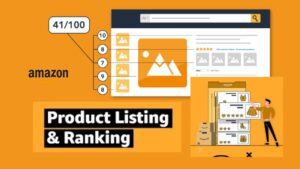Introduction:
In the vast and competitive realm of e-commerce, Amazon stands as a giant, attracting millions of buyers and sellers from around the globe. To succeed in this digital marketplace, it’s essential not only to understand your own strategies but also to gain valuable insights from your competitors. In this comprehensive guide, we will delve into the importance of Amazon competitor analysis, exploring how harnessing insights from your rivals can refine your strategies and position your business to outshine the competition.
- Identifying Your Amazon Competitors:
Before diving into analysis, it’s crucial to identify who your competitors are on the Amazon platform. Look for sellers offering similar products or targeting the same customer base. Tools like Jungle Scout, Helium 10, or Amazon’s own analytics can help you identify and track your competitors effectively.
- Analyzing Pricing Strategies:
One of the first areas to explore in your competitor analysis is pricing. Evaluate how your competitors price their products in comparison to yours. Understand whether they offer discounts, bundles, or unique pricing structures. This analysis can guide your own pricing strategy, helping you remain competitive in the market.
- Product Listing Optimization:
Examine the product listings of your competitors. What keywords are they targeting? How do they structure their titles, descriptions, and bullet points? Analyzing these elements can provide valuable insights into effective listing optimization strategies, helping you refine your own product pages for better visibility and conversion rates.
- Customer Reviews and Feedback:
Reviews are a goldmine of information. Analyze customer feedback on your competitor’s products. What do customers love, and what are common pain points? Use this information to enhance your own product offerings and address potential issues, thereby improving customer satisfaction and loyalty.
- Supply Chain and Fulfillment:
Explore how your competitors manage their supply chain and fulfillment processes. Are they utilizing Fulfillment by Amazon (FBA), or do they fulfill orders independently? Understanding their logistics can help you optimize your own processes, ensuring timely deliveries and efficient order fulfillment.
- Social Media and Marketing Strategies:
Beyond the Amazon platform, examine how your competitors leverage social media and other marketing channels. What platforms do they use? How do they engage with their audience? Adopting successful social media and marketing strategies can enhance your brand visibility and customer engagement.
- Competitor Advertising on Amazon:
Amazon offers various advertising tools, including Sponsored Products and Sponsored Brands. Analyze your competitor’s advertising strategies. Which products are they promoting? What keywords are they targeting? Understanding their approach can inform your own advertising strategy for optimal results.
- Staying Informed About New Products and Innovations:
Keep a close eye on your competitor’s product launches and innovations. Are they introducing new features, packaging, or variations of existing products? Staying informed about your competitor’s product roadmap can help you adapt and innovate to maintain a competitive edge.






